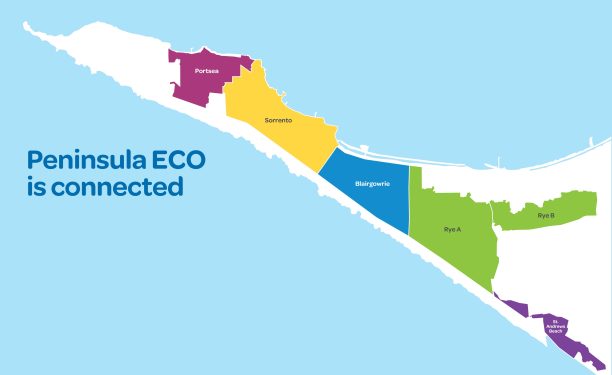
SOUTH East Water has finished its southern peninsula sewage system 12 months ahead of schedule and $100 million under budget.
The state government authority says it is a win for the environment and its customers, who will pay one-third less to connect than originally estimated.
The Peninsula ECO sewerage project was announced by the state government in July 2013 (ECO stands for early connection option).
Then water minister Peter Walsh said the $357 million project would replace “outdated and often unhygienic septic tank systems” and connect one of the last unsewered areas in Melbourne’s southeast 16 years earlier than had been planned.
Last week, SEW said “leading edge technology and innovative drilling techniques” it had developed had reduced construction from 36 months to two years. The project had cost $255 million, $102 million less than estimated in 2013.
The largest project of its type in Australia, SEW contractors have installed 235 kilometres of pipes to service 16,500 properties in Rye, St Andrews Beach, Blairgowrie, Sorrento and Portsea plus 15 kilometres of pipes to connect the system to Boneo treatment plant.
More than 750 properties between Rye and Portsea have been connected since last October. Connections in a second part of Rye start this week with Blairgowrie in February.
SEW said septic tanks and treatment plants may seem low maintenance “but they are polluting our environment with untreated, contaminated water”.
“Dirty water seeps from properties, through the peninsula’s sandy soil into groundwater, bays and beaches. It is worst during the holiday period.”
In late August, SEW managing director Kevin Hutchings presented rebate cheques of almost $5000 to about 200 customers who connected early.
Connection costs differ for each property but range from $5000 to $16,000.
He said the peninsula was one of the state’s most picturesque areas “but leaking septic tanks are polluting the environment and have the potential to contaminate bore water”.
Removing septic tanks and individual treatment plants had seen property owners gaining up to 160 square metres of land, “an area equivalent to a three-bedroom home”.
Project innovations included environmentally sensitive drilling, a low-pressure system instead of traditional gravity mains, a cloud-based waste flow management system that smooths out sewage flows, and a monitoring unit at each property telemetrically connected to SEW’s operations centre.
Items that cannot be discharged into the system include cooking oil and fat, baby wipes, nappies, sanitary napkins and tampons, socks, rags, chemicals (except domestic products such as dishwashing powder, detergent and hair dye), seafood shells, glass, metal, pet litter, flammable materials, oil, grease, petrol, diesel, and water-soluble and oil-based paint.
• Details: Visit South East Water’s shop at 2449 Point Nepean Rd (next to Rye Hotel), call 1800 720 613 or betterconnected.com.au
First published in the Southern Peninsula News – 3 November 2015